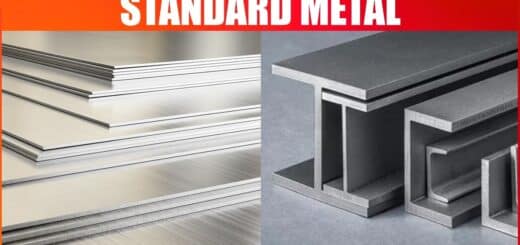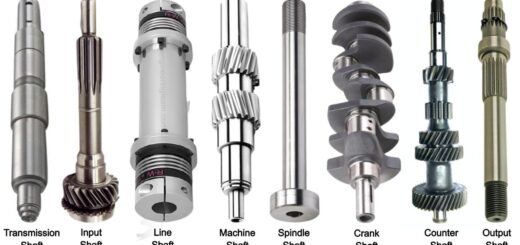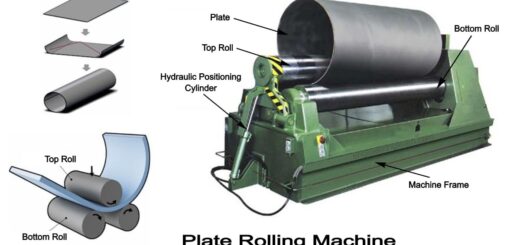23 Parts of Milling Machine and Their Functions [Complete Guide]
![23 Parts of Milling Machine and Their Functions [Complete Guide]](https://engineeringlearn.com/wp-content/uploads/2023/07/Parts-of-Milling-Machine-1024x539.jpg)
Introduction
23 Parts of Milling Machine and Their Functions [Complete Guide]: – In a production industry there a heaps of machines tools are available to do an extensive variety of operation in the work piece among them milling machine is one of the machine tool. Interestingly, the most milling machines are controlled by computer programs or algorithms. A fast-rotating milling or cutting attachment eliminates parts of the workpiece. The machinist takes care of the stock into equipment to produce the ideal outcome. Milling machines are popular with numerous manufacturers and engineers, as they help to produce parts that are more perplexing than the average 3D printer can handle.
What is a Milling Machine?
It is a machine which is utilized to eliminate metals from the workpiece with the assistance of a revolving cutter called milling cutter. It is utilized to machined the flat, rough and irregular surfaces and this is done by taking care of the workpiece against a rotating milling cutter. The milling machine is one of the most flexible traditional machine tools, fit for cutting many metals. A milling machine can perform different complex tasks, for example, ordering, group processing, ride processing, etc. Mills utilize various cutting devices, including rotating blades, drills, and even abrasives.
A milling machine is designed or intended to hold material safely in a vise or generally secured to the bed of the mill. The cutting tool itself regularly has either horizontal or vertical movement, which thus gives its name to the two essential sorts of milling machines; horizontal and vertical milling machines.
The milling machine is the fundamental machining operations. In this process, workpiece is taken care beside a turning barrel shaped device. The turning tool has few cutting edges. The milling process is prominent as of other machining operations on the foundation of direction between the tool axis with the feed direction, however, in different tasks like boring, turning, etc. The tool is fed of in a manner lined up with the axis of rotation. Milling machines can likewise use for slotting, boring, make a round profile with gear cutting by having legitimate attachments.
Parts of Milling Machine
Below we will discuss different parts of a milling machine and how every parts function: –
- Motor
- Power Feed Mechanism
- Tool Head
- Digital Readout
- Ram
- Ram Adjust Handle
- Over Arm / Overhanging Arm
- Quill Feed Handwheel
- Quill Feed Rate Selector
- Quill
- Spindle
- Cutting Tool
- Table& Table Locks
- Table Stop Dogs
- Table Power Feed
- Machine Vice
- Saddle and Swivel Table
- Saddle Traverse Crank
- Knee
- Vertical Knee Traverse Crank
- Column and Base
- Arbour Support
- Motor Switch
1. Motor: ( Parts of Milling Machine )
It’s undeniably true that a motor is utilized to convert electrical energy into mechanical energy. In this way, in the milling process, the motor is utilized to rotate or turn the cutting device (or multi-point cutting tool) to accomplish the motion to shear the material and eliminate it.
2. Power Feed Mechanism: ( Parts of Milling Machine )
The knee contains the power feed mechanism. It is utilized to control longitudinal, traverse, and vertical feeds. For any column or section milling machine and universal knee, feed is acquired by turning on the speed selection handle until the pace of feed selection is shown or displayed on the dial. This mechanism empowers you to move your workpiece in the left-right, in-out, and all-over directions. You can likewise set the feed rate of the machine, by utilizing the feel selection lever or switch located or situated on the front side of the Control panel.
3. Tool Head: ( Parts of Milling Machine )
The tool head is part of the machine tools. After the machine is installed on the milling head, the middle line of chisel rotation can make a workpiece machine on the corner to the middle line of spindle rotation.
4. Digital Readout: ( Parts of Milling Machine )
The digital readout is a numeric showcase as well as the presentation that is installed on the milling machine. The digital readout display is showing the place of the part of the vise table. The milling machine that is equipped with a digital readout can work in a faster way.
5. Ram: ( Parts of Milling Machine )
The ram is a movable overhanging arm on an upward milling machine. The ram is mounted on top of the column, and the milling head is attached or connected to it toward one side. For example, on Bridgeport milling machines, the operator or administrator can extend and swivel the ram to cover a greater amount of the worktable while machining a larger workpiece.
6. Ram Adjust Handle: ( Parts of Milling Machine )
The ram Adjust handle is a lever or switch to adjust or change the position of the ram or arm, so it tends to be operated without any problem.
7. Over Arm / Overhanging Arm: ( Parts of Milling Machine )
The Ram is a movable overhanging arm on an vertical or upward milling machine. The ram is mounted on top of the column, and the milling head is joined to it on one end. It could be a solitary casting that slides along the dovetail channels on the column’s top face.
8. Quill Feed Handwheel: ( Parts of Milling Machine )
The Quill feed handwheel permits the milling cutter to be raised and brought down likewise to a drilling machine by moving the spindle in and out from the head. The Quill handle, which is located or situated at the right of the head, is utilized to physically move the quill all over and is utilized to drill a hole like a drilling machine.
9. Quill Feed Rate Selector: ( Parts of Milling Machine )
A Quill feed rate selector is a quill selector that is utilized to adjust or change the speed of the Quill in inches per revolution (IPM). The accessible setting on the standard machine is .001, .003, and .005.
10. Quill: ( Parts of Milling Machine )
A cutting part of the milling machine is referred to as a Quill. The plume allows or permits the milling cutter to be brought up as well as brought down in a way like a drill press by moving the spindle all through the head.
11. Spindle: ( Parts of Milling Machine )
It is shafted or screwed that is utilized to hold and drive the cutting device of the milling machine. Gear trains are available within the column. An inward taper is machined at the face of the spindle close to the table. The inward taper at the front of the shaft permits just a tapered cutter holder or arbor. It has two keys on the front that give a positive drive to the cutter holder or arbor. Spindle of milling machine may be positioned horizontally and vertically which depends on particular mill in use.
12. Cutting Tool: ( Parts of Milling Machine )
The Cutting tool is the essential component of the milling where the material of the workpiece is eliminated utilizing its cutting point or edges. While selecting cutting tools the efficiency and quality of the machining process is essential. Carbon steel is the material used for low-speed activity or operation in wind drills, framing apparatuses, milling cutters, and so on.
13. Table& Table Locks: ( Parts of Milling Machine )
A rectangular casting is available at the top of the saddle. It is utilized to hold work or work-bearing equipment. It has various T-slots for holding work and work-holding gadgets. Tables can be operated or worked manually or by electricity. To move the tables manually or physically, you need to engage and turn the longitudinal hand crank. To move it through the power, draw in the longitudinal directions to take care of the control switch. Table locks is a table lock that has the functional capability to make the table position doesn’t change.
14. Table Stop Dogs: ( Parts of Milling Machine )
Table stop dogs are a part that has the functional capability as a table stop on the machine.
15. Table Power Feed: ( Parts of Milling Machine )
The role of the table power feed is to adjust or change the table utilizing power by rotating or turning the accessible lever.
16. Machine Vice: ( Parts of Milling Machine )
A clamping gadget which is utilized to hold a workpiece safely while operating a machine tool is known as machine vice. As the milling process is performed by rotating or pivoting the multi-point cutting device, because of the motion of the tool, the workpiece will change its position, which is challenging to play out the task. The force or pressure from a machine tool’s bit can prompt the spinning or throwing of the object.
However, the vise can lower this kind of risk by maintaining and keeping a gentle hold on it. Thus, to hold the workpiece tightly and firmly, the machine vise is utilized. Machine vices can be utilized to hold different materials, including metal, wood and plastic.
17. Saddle and Swivel Table: ( Parts of Milling Machine )
The saddle is accessible at the knee and further supports the table. It slides on a horizontal dovetail at the knee and parallel with the hub of the dovetail spindle. The swivel table is attached to the seat, which can be rotated or pivoted on a horizontal plane in any direction.
18. Saddle Traverse Crank: ( Parts of Milling Machine )
The saddle traverse crank is a part or section that has a functional capability to connect or interfacing the saddle and engine crank.
19. Knee: ( Parts of Milling Machine )
Castings support both saddle and table. All gearing mechanisms are encased within the knee. The knee is the principal moving part of the milling machine. The saddle and table support casting. The gearing gadget is included within the knee. It is maintained and improved by an upward positioning screw, likewise recognized as an elevating screw.
20. Vertical Knee Traverse Crank: ( Parts of Milling Machine )
The connecting or associates part of the vertical knee with the machine arm is the vertical knee Traverse crank. The knee-elevating crank is the most rigid way for making adjustments or changes in the vertical direction.
21. Column and Base: ( Parts of Milling Machine )
A column, as it sounds, is a tall column or section mounted upward on the back side of the base. It is a mountain in an upward direction on the base. It upholds the knee, table, and so forth. It works as housing for a wide range of various driving members. It is a hollow member comprising of driving gear and at times a motor for the axle and table. The column or segment has an oil repository and siphons to grease up the axles. The base is the part whereupon the entire machine parts are being mounted. It is a sort of foundation for the machine. The base bears the weight and heaviness of all other parts. It is made using Grey cast iron.
22. Arbour Support: ( Parts of Milling Machine )
A casting with a bearing upholds the external end of the arbor. It likewise assists with aligning the external end of the arch with the axle. It forestalls the springing of the external edge of the arbor during cutting operations. The two sorts of arbor supports are usually utilized in milling machines. The first has a smaller diameter bearing hole, with a most extreme diameter of 1 inch. Furthermore, the other has a hole with a larger diameter, typically up to 23/4 inch. The arbor support contains oil reservoirs that lubricate the bearing’s surfaces. It very well may be clamped anywhere on the over arms.
23. Motor Switch: ( Parts of Milling Machine )
The motor switch has a functional capability as a switch for the motor drive of the milling machine, so you can adjust or change the motor drive utilizing the motor switch. Motor switch is the general part of the milling machine, yet it likewise rely upon the sort of the milling machine.
Conclusion
A milling machine is perhaps of the most influential and versatile type of machine tracked down in the manufacturing industry. It is the most important machine in the tool room as virtually all the operations or tasks can be performed on it with high precision. Because of the several kinds of mill operators, the mill operator’s use is immense and can be found in significant-level applications. They can likewise be utilized to drill, bore, cut gears, and produce slots and pockets. However milling machines come in different shapes and sizes, and their essential function remains something very similar. In any case, getting the right machine for the job is very essential.
Hence the above information provides you with superior information on milling machines and how they differ. The innovation is upgrading with lots of research. Sometime you should be aware while utilizing a milling machine, Serious injuries can happen on the off chance that the operator or administrator contacts the rotating cutter. Material could spin or turn and strike an operator in the event that the material isn’t secured to the table.













